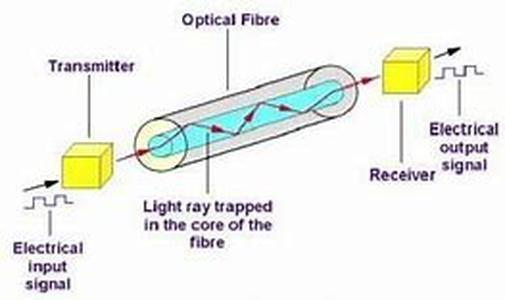
Things Have Been Going Great For This Industry And With Fiber Optics Capacity And Capability To Handle More Load And Demand A Lot Is In Store For Better And Bigger Industry Applications. It Becomes Worthwhile To Take A Look And Discover Some Things About Fiber Optics Theory, And Why It Has Grown So Popular In The Recent Years Not Only In The Said Industry, But On Other Major Industries As Well.Fiber Optics Theory Its CompositionFiber Optics Can Be Made Of Either Glass Or Plastic, But Plastic Fibers Tend To Have Higher Attenuation And Lower Bandwidths That Their Glass Counterparts. That Is Why The Glass Fibers Are The Preferred Material Of Choice And Have Gained The Approval Of Industries Demanding For Such High Quality.Fiber Optics Is Made Up Of 3 Components: A.) The Pure Solid Core Glass, B.) Its Cladding And C.) Its Jacket. The Glass Core Is Where The Light Travels Through, The Cladding Portion Makes It Possible To Reflect Back The Light To The Core During Transmission, And The Outer Coating Of This Fiber Optics Ensures That The Inner Layers Are Well Protected.Usually The Outermost Coating Is Of Dual Layer Composition. The Innermost Layer Cushions The Fiber, While The Outermost Portion Protects The Fiber During Cabling, Installation And Termination Activities.Fiber Optics Theory On Communications SystemThere Are 3 Elements Involved Here: A.) The Light Source, B.) The Fiber Media And C.) The Light Detector. The Light Sources Mainly Used Are LED (Light-Emitting Diode), And ILD (Injection Laser Diode). These Are Both Directly Modulated By Varying The Input Current. The Choice Of Which To Use Between The Two Involves The Consideration Of The Application Where It Will Be Used, And The Costs Involved.The Fiber Media Is Usually Made Of A Pure Glass For Better And Efficient Handling Of Light For Communication Purposes. With This, There Will Be Less Losses Of Light And Communication Will Be Carried Out To Longer Lines.Detectors Are The Receiving End Of A Fiber Optic Link. These Emit Electrons When Light Of Short Wavelengths Gives Illumination To These Detectors Thereby Generating Electric Signals.Fiber Optics Theory On Total Internal ReflectionThis Fiber Optics Theory Involves The Concepts Of Reflection And Refraction. And With This Phenomenon Of Total Internal Reflection In Fiber Optics, The Light From The Pure Glass Core (a More Dense Medium), Is Reflected Back Into The Core By The Cladding (the Lesser Dense Medium). This Ensures The Light Beams Are Focused With Negligible Losses When It Travels Along The Fiber Optics Lines.





